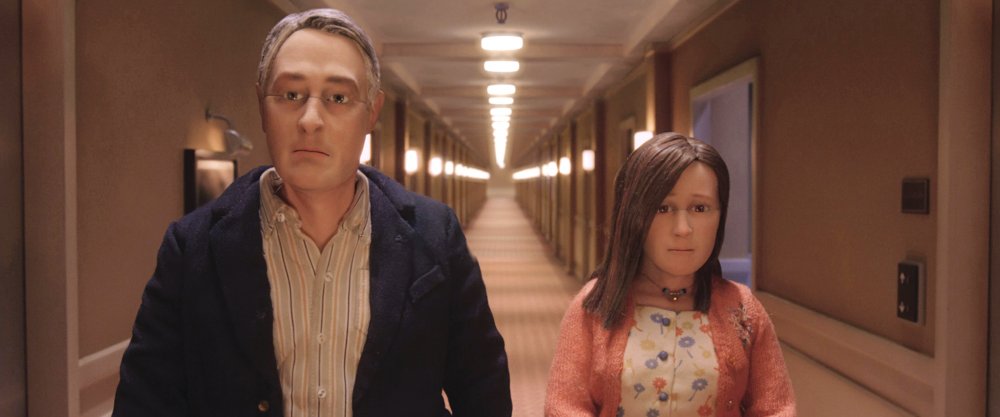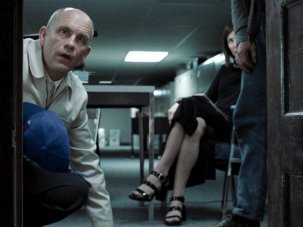Aside from making the 2014 sitcom pilot How and Why, Charlie Kaufman has been missing in action since his directorial debut Synecdoche, New York seven years ago. The hiatus has scarcely diluted his authorial view that modern life is intolerable, a series of humiliating, futile quests to achieve material, artistic, romantic or spiritual goals likely to be impeded by the seeker’s maladaptive behaviour. Though fellow fatalists Woody Allen (when in Dostoevskian mode) and Todd Solondz occupy similar territory, the arrival of Kaufman’s stop-motion drama Anomalisa (co-directed by animation specialist Duke Johnson) reiterates the uniqueness of his surreally skewed metaphysical inquiries.
USA 2015
Certificate 15 89m 57s
Directors Charlie Kaufman, Duke Johnson
Voice Cast
Michael Stone David Thewlis
Lisa Hesselman Jennifer Jason Leigh
everyone else Tom Noonan
In Colour
[2.35:1]
UK release date 11 March 2016
Distributor Curzon Film World
anomalisa.co.uk
► Trailer
Kaufman originated Anomalisa as a ‘sound play’. It was read by David Thewlis, Jennifer Jason Leigh and Tom Noonan as part of a double bill called Theater of the New Ear at UCLA in 2005. In the movie, everybody – with one exception – who enters the orbit of the existentially strung-out antihero Michael Stone (Thewlis) speaks with the same flat voice (Noonan’s) and has the same benign face plastered on the same rounded head. An unmotivated motivational speaker and sales guru, Michael has become so infected by the insincere empathy he touts professionally that he can no longer differentiate one person from another.
The soullessness of his career as an avatar of consumerism has engulfed him with ennui and paranoia. Synecdoche’s theatre director Caden Cotard (Philip Seymour Hoffman) – named for the Cotard delusion, whose sufferers believe they are dead – experiences a similar malaise, but grapples with it for decades by mounting a self-reflexive opus. Michael numbs himself through jouissance, preying on vulnerable women such as Lisa (Leigh), a fellow guest at Cincinnati’s fictional Fregoli hotel. Kaufman named it after Fregoli delusion, a neuropsychiatric condition that causes sufferers to misidentify different people as a single person apparently disguised or able to change his or her appearance.
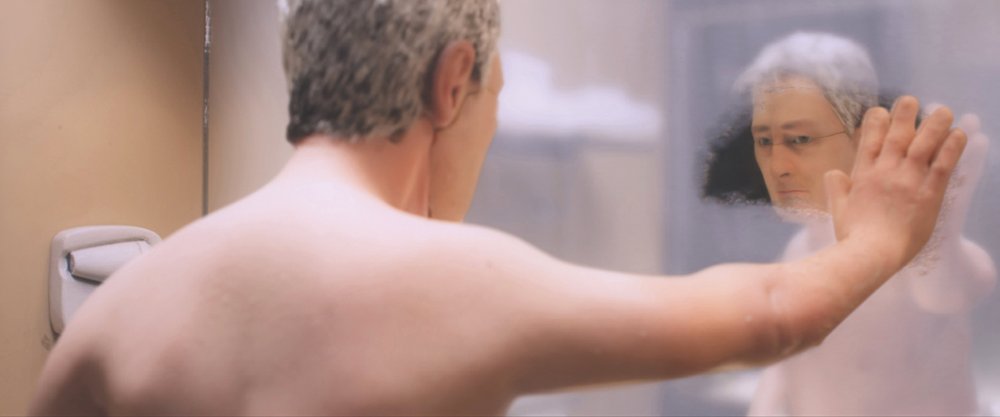
Equating digital-age conformism with non-individuation, Kaufman and Johnson made everyone except Lisa a virtual cyborg: Michael hallucinates that his jaw falls off, revealing a metallic rictus grimace worthy of Lon Chaney; lines on the puppets’ temples and noses indicate where their modular parts join. Whereas live-action mimesis might have muted the characters’ distinguishing traits – Michael’s slumped gait, the half-curtain of mousy hair hiding Lisa’s facial disfigurement – the puppets’ movements invite anthropological scrutiny. The distancing effect of the animation limits subjective identification with the characters while heightening audience awareness of the film’s social and sexual dynamics.
Typically, Kaufman examines the way people hide behind masks and the psychological significance of why Michael should perceive multiple versions of the same person. Playing with notions of projection and control, Kaufman has multiplied individuals before. Being John Malkovich (1999) mass-produced the eponymous actor, who was puppetised by the lowly puppeteer (John Cusack) in his head. In Adaptation. (2002), Nicolas Cage’s insecure screenwriter is threatened by his freeloading twin-cum-alter ego. When Synecdoche’s Caden starts creating doppelgängers for his epic meta-drama, he contrives to triple his amanuensis (Samantha Morton), having sabotaged their love affair when they were younger.
On returning home, Michael idly presents his young son Henry with a gift: an ornate antique sex toy in the guise of a mechanical singing geisha, which unexpectedly leaks semen. The incident has baffled some Anomalisa viewers, but there’s no mistaking the semen’s provenance. Michael has either masturbated into the automaton’s mouth, or his seed has been magically transposed there, at no great risk to the film’s logic, given that the toy is a substitute for the pliant Lisa.
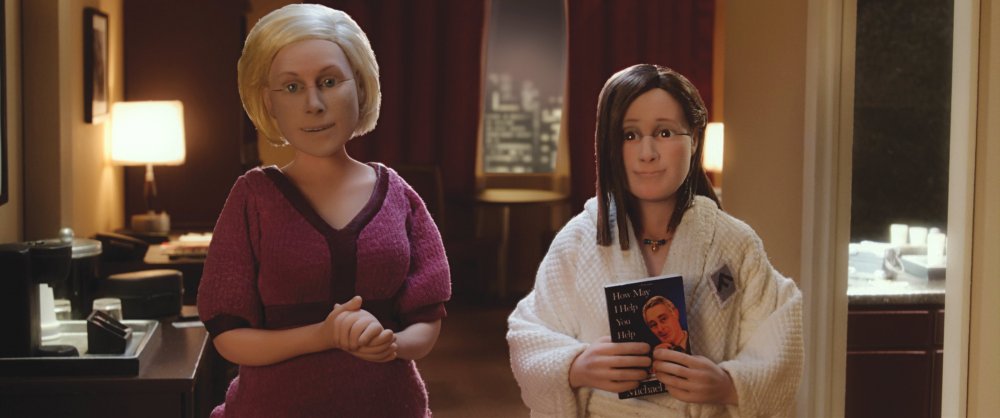
Lisa with her colleague and fellow delegate Emily (left)
The mystery concerns Michael giving Henry the automaton in a defiled state. Is he so befogged by self-absorption that he’s oblivious to his actions, as he is oblivious to others? His reluctance to talk to Henry when he calls home suggests he detests him for tying him to a tedious bourgeois family life and unconsciously wants to feminise (ie emasculate) him by contaminating him with his semen. That Henry was fixated on receiving a gift – and is thus a pushy little consumer – adds grist to this sinister mill.
Like Thewlis’s demonic drifter in Naked (1993), Michael is a disaffected, unstable exploiter of women; both mirror social flux as they explore labyrinths (the Fregoli; inner-city London) symbolising the murky pathways of their minds. There’s a troubling antecedent for Lisa, too: Leigh’s phone-sex operator Lois in Robert Altman’s Short Cuts (1993). They’re linked by their caressing voices and their commercialising of them. Lois’s clients respond to her pornographic spiel; Lisa’s affect is soothing, like the YouTube cult ASMR. Leigh, in fact, steals the show with her a cappella ‘Girls Just Want to Have Fun’, especially poignant because Lisa – constitutionally cheery though she is – clearly hasn’t had that much.
In the March 2016 issue of Sight & Sound
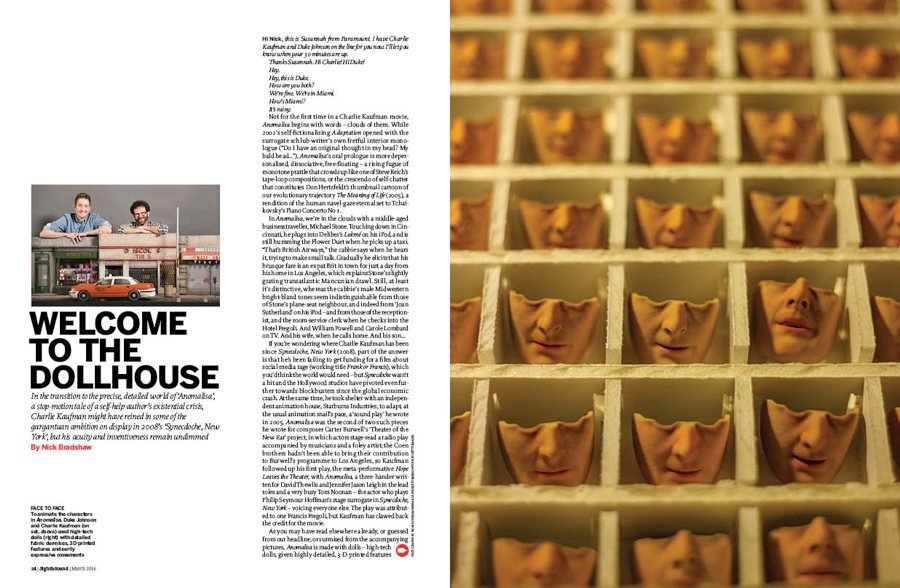
Welcome to the dollhouse
In the transition to the precise, detailed world of Anomalisa, a stop-motion tale of a self-help author’s existential crisis, Charlie Kaufman might have reined in some of the gargantuan ambition on display in 2008’s Synecdoche, New York, but his acuity and inventiveness remain undimmed. By Nick Bradshaw.
Plus: Pulling the strings
Charlie Kaufman’s brilliant, funny, self-reflexive philosophical investigations trade on a neurotic vision of the self that is perpetually on the verge of catastrophic collapse. By Jonathan Romney.
→ Buy a print copy
→ Access the digital edition
→
Also recommended this week
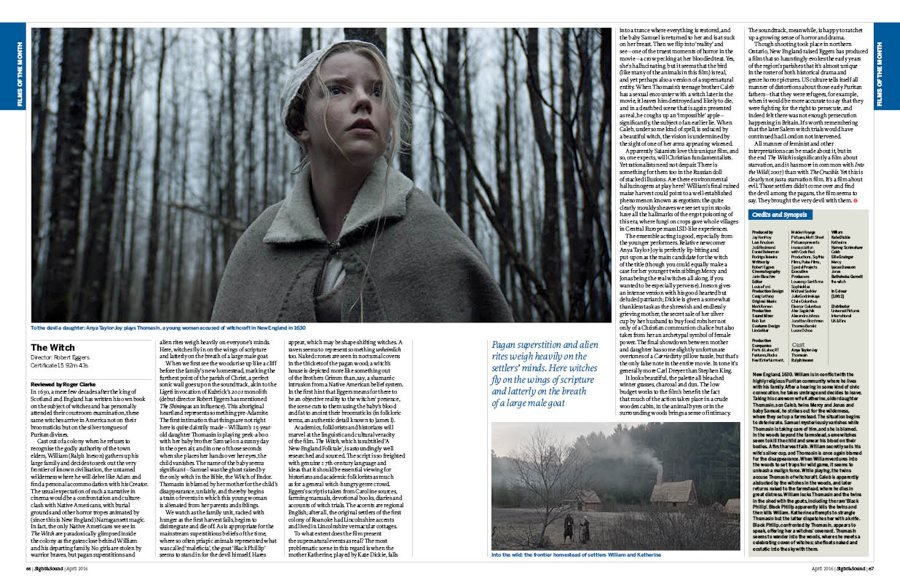
The Witch
Director Robert Eggers | Brazil / Canada / United Kingdom / USA 2015 | On wide release
thewitchmovie.co.uk | ► Trailer
A richly researched and rendered folkloric horror drama about Satanic goings-on amidst a family of Puritan settlers in seventeenth-century New England. Reviewed by Roger Clarke as one of our Films of the Month:
“Apparently Satanists love this unique film, and so, one expects, will Christian fundamentalists. Yet rationalists need not despair. There is something for them too in the Russian doll of stacked illusions. Are there environmental hallucinogens at play here?”
☞ Read Anton Bitel’s interview Voices of the undead: Robert Eggers on The Witch
-
Sight & Sound: the March 2016 issue

Inside the mind of Charlie Kaufman, from Being John Malkovich to Anomalisa. Plus Hitchcock-Truffaut, Hollywood reboots, A Bigger Splash, Making a...
-
Sight & Sound: the April 2016 issue

Tom Hiddleston and the cast and crew of High-Rise talk class and violence past and future – and the rise of cinema’s Ballardian worldview....
-
The Digital Edition and Archive quick link
Log in here to your digital edition and archive subscription, take a look at the packages on offer and buy a subscription.




